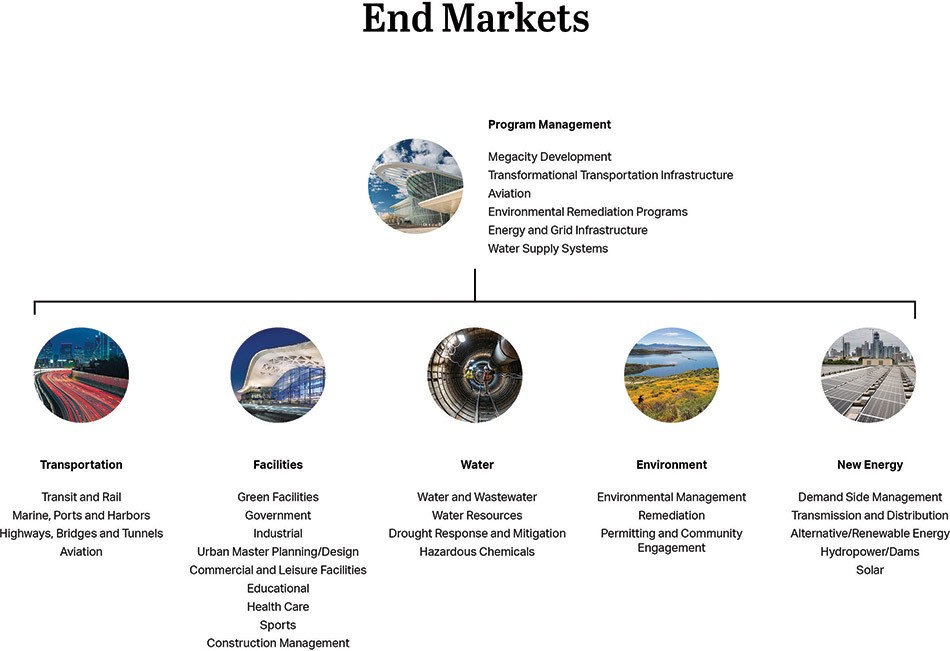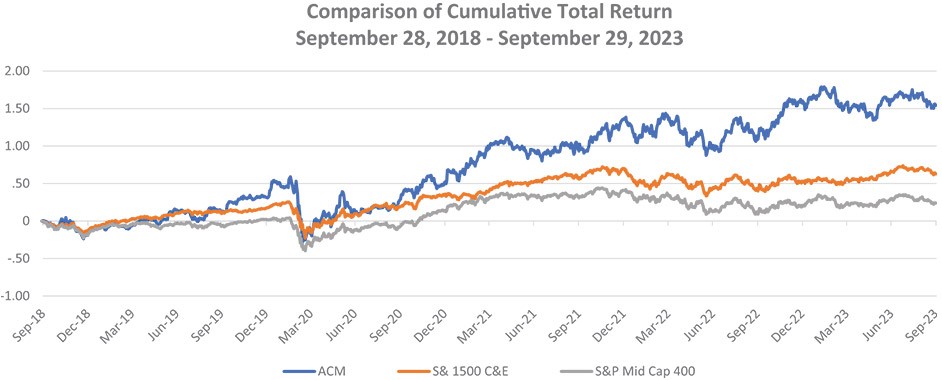PART I
ITEM 1. BUSINESS
In this report, we use the terms “the Company,” “we,” “us” and “our” to refer to AECOM and its consolidated subsidiaries. Unless otherwise noted, references to years are for fiscal years. Our fiscal year consists of 52 or 53 weeks, ending on the Friday closest to September 30. For clarity of presentation, we present all periods as if the year ended on September 30. We refer to the fiscal year ended September 30, 2022 as “fiscal 2022” and the fiscal year ended September 30, 2023 as “fiscal 2023.”
Overview
We are a leading global provider of professional infrastructure consulting services for governments, businesses and organizations throughout the world. We provide advisory, planning, consulting, architectural and engineering design, construction and program management services, and investment and development services to public- and private-sector clients worldwide in major end markets such as transportation, facilities, water, environmental, and new energy.
According to Engineering News-Record’s (ENR’s) 2023 Design Survey, we are the second largest general architectural and engineering design firm in the world, ranked by 2022 design revenue, and we are the number one ranked transportation design, facilities design, environmental engineering, environmental consulting and environmental science firm in the world. In addition, we are ranked by ENR as the leading firm in a number of design end markets, including several water infrastructure-related markets, as well as the number two green design firm and the number six green contractor in the world. We utilize our scale and the technical strength of our workforce to create innovative solutions for our clients. We are accelerating investments to extend our capabilities, including the expansion of our digital capabilities to create innovative ways of delivering our work and solving the world’s most complex challenges. Clients are turning to us to create solutions to achieve their Environmental, Social, and Governance (ESG) objectives with a focus on sustainability and resilience initiatives, which include supporting the advancement of more energy efficient and less-carbon-intensive infrastructure. With our market leading technical capabilities, we are uniquely well suited to address these challenges.

Our business focuses primarily on providing fee-based knowledge-based services. We primarily derive income from our ability to generate revenue and collect cash from our clients through the billing of our employees’ time spent on client projects and our ability to manage our costs. AECOM Capital primarily derives its income from real estate development sales and management fees.
3





